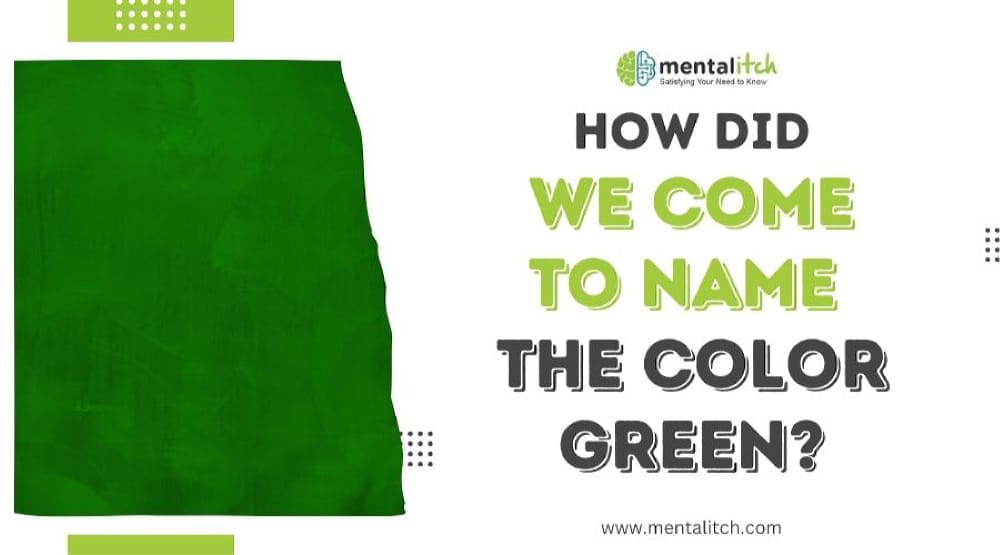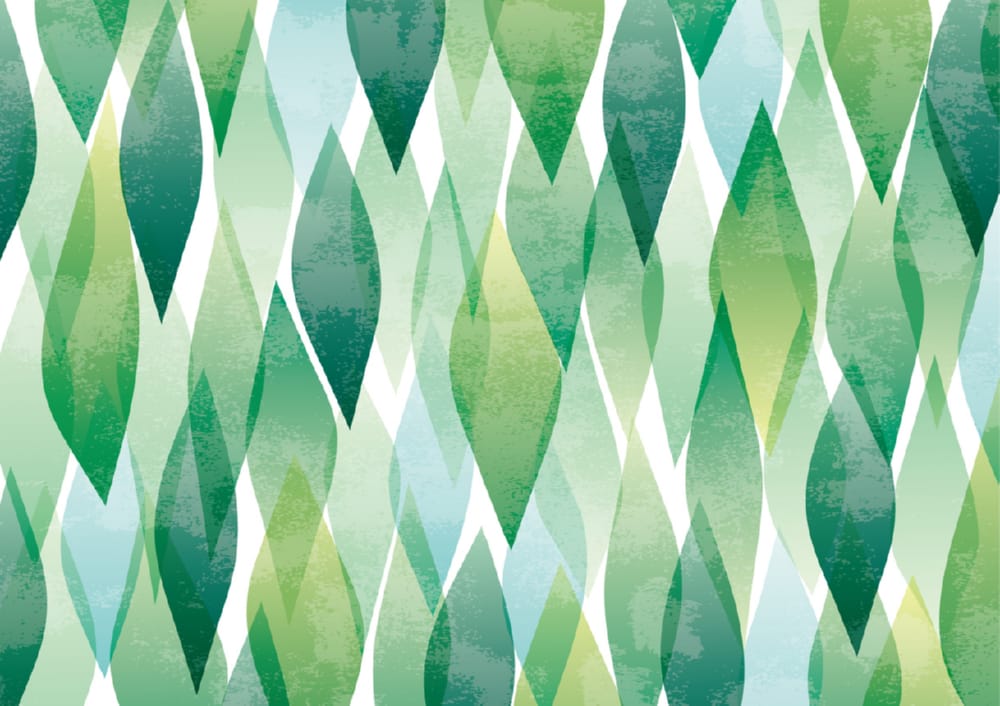Colors are everywhere around us, and they play a big part in how we see the world. Green is one of those colors we see a lot because it’s all over nature, like trees, plants, and grass. But have you ever wondered how we started calling this color “green”? In this article, we’re going to explore the journey of how the color green got its name. We’ll look at where the word “green” came from, how people in the past thought about this color, and why it’s so important to us today. Let’s dive into the fascinating story of naming the color green.
The Origin of “Green”
Etymology of the Word “Green” in the English Language
The word “green” has been around for a very long time. In English, it comes from the Old English word “grene,” which is similar to the words in other Germanic languages, like “grün” in German and “groen” in Dutch. These words all mean the color green. But “grene” didn’t just mean the color. It also meant things that were fresh, young, or growing. So, when people talked about something green, they were often talking about plants or the start of life.
Comparison with Other Languages and the Historical Roots of Naming Green
When we look at other languages, we see different stories about how they name green. For example, in some languages, the same word can mean both green and blue. In Japanese, the word “ao” used to be used for both colors until more recently when “midori” became the word for green. This shows us how people see colors differently depending on their language and culture.
A long time ago, many cultures didn’t have a separate name for green. They might have described it as a type of yellow or blue. But as languages grew and changed, people started to see green as its own color. This change happened at different times in different places.
Understanding the origin of “green” and comparing it with other languages helps us see how special our way of naming and seeing colors is. It’s like a window into history and shows us how people from the past saw the world around them.
Historical Significance of Green
Green in Ancient Cultures and Civilizations
Green has always played a significant role in the history and culture of ancient civilizations. For the Egyptians, green was the color of rebirth and regeneration. They believed it represented the lush vegetation along the Nile River and the renewal of life, which is why they often painted the walls of their tombs green.
In Roman times, green was associated with Venus, the goddess of gardens, vegetables, and vineyards, showing the color’s link to fertility and growth. The Celts, too, valued green, seeing it as a symbol of nature, life, and the springtime renewal. They used green in their clothes and decorations to honor their connection to the earth.
Symbolic Meanings Associated with Green Throughout History
Throughout history, green has carried many symbolic meanings. It has been a symbol of life, youth, and hope due to its strong association with spring and the natural world. In the Middle Ages, green was sometimes linked to love and the base, natural desires of man. However, it could also represent jealousy or envy, as in the phrase “green with envy.” Despite these varied meanings, the overarching theme of green has consistently been tied to nature, vitality, and growth.
The Role of Green in Art, Fashion, and Heraldry Over the Centuries
In art, green has been used to create a sense of life and nature. Artists have used it to paint landscapes, plants, and trees, capturing the essence of the natural world. In fashion, green has gone through periods of popularity, often reflecting societal attitudes towards nature and the environment. For example, during the Renaissance, wearing green clothing was fashionable among the wealthy, symbolizing status and a connection to the natural world.
In heraldry, green (known as vert) is one of the standard colors used in the coat of arms. It represents hope, joy, and loyalty in love. It’s used in shields, banners, and family crests to symbolize the values and traits of the bearer. The use of green in heraldry underscores its enduring significance and the deep-rooted symbolic meanings it carries through history.
Green’s historical significance is deep and varied, touching on aspects of life, renewal, and the natural world across different cultures and eras. Its enduring presence in art, fashion, and symbols of identity showcases the profound impact this color has had on human society throughout the ages.
Linguistic Evolution of Green
How the Perception and Naming of Green Have Changed Over Time
The way people think about and name the color green has evolved a lot throughout history. In the beginning, many languages didn’t even have a word specifically for green. Instead, they used the same word for green and blue or described green as a type of yellow or blue. Over time, as societies and languages developed, people began to see green as a unique color, leading to the creation of a specific word for it. This change shows how our understanding of colors depends on our culture and language.
The Development of Words for Different Shades of Green in Various Languages
- English: Over time, English speakers started to use more specific names for different shades of green, like olive, lime, and jade. This helped people communicate more precisely about colors.
- Japanese: Initially using “ao” for both green and blue, modern Japanese now use “midori” to describe green specifically. This shift reflects a change in cultural perception.
- Russian: Russian makes a clear distinction between light greens (“зеленый”) and dark greens (“салатовый”), showing the language’s precision in color description.
Interesting Facts About Languages That Have Multiple or Few Words for Green
- Multiple Words: Some languages have many words for green, each describing a different shade. For example, in Arabic, there are several words for green, each conveying a different nuance of the color.
- Few Words: Conversely, some languages use very few words to describe green or lump it together with other colors. This can challenge speakers of these languages when they try to describe the many shades of green that they see in nature or art.
The linguistic evolution of green highlights how our perception of color is deeply intertwined with language. As languages grow and change, so do the ways we describe and understand the world around us. This evolution also points to the rich diversity of human culture and how our environment influences the way we communicate.
The Science of Seeing Green
How Humans Perceive Green
The ability to see green is a fascinating aspect of human vision, made possible by the way our eyes and brains work together. Inside our eyes, there are tiny cells called cones that are sensitive to light. There are three types of cones, each responding to different wavelengths of light: one for red, one for green, and one for blue. The cones for green are particularly sensitive to light in the green wavelength. When we look at something green, these cones are activated and send signals to our brain, telling us that we’re seeing green. This process allows us to distinguish between millions of different colors, including the vast spectrum of greens in nature.
The Role of Green in the Natural World
Green plays a crucial role in the natural world, most notably in the process of photosynthesis. Plants, algae, and certain bacteria use chlorophyll, a green pigment, to absorb energy from sunlight. This energy is then used to convert carbon dioxide and water into glucose and oxygen, essentially providing the basic energy source for most life on Earth. The predominance of green in nature is due to chlorophyll’s efficiency at absorbing the sun’s energy, making green the color most commonly associated with life, growth, and fertility.
The Psychological Effects of Green
Green also has significant psychological effects on humans. Studies have shown that green can have a calming and rejuvenating effect, reducing stress and improving mood. This is why natural green spaces are often seen as peaceful retreats from the hustle and bustle of urban life. The color green is also associated with safety and stability, which is why it’s used in traffic lights to signal ‘go’ and in design to evoke a sense of balance and harmony.
Cultural Significance of Naming Colors
The way we name colors is deeply rooted in our culture and history, reflecting how societies perceive and value the visual world. Color naming is not just a matter of linguistic interest but also offers insights into cultural priorities, environmental factors, and even economic conditions. The cultural significance of naming colors goes beyond mere labels, influencing our interaction with and interpretation of the world around us.
The Influence of Environment on Color Naming
The natural environment plays a crucial role in shaping the color vocabulary of a culture. For instance, communities living in lush, verdant landscapes might have multiple words to describe different shades of green, reflecting the importance and prevalence of greenery in their surroundings. In contrast, desert cultures may place a higher emphasis on the subtle variations of browns and yellows, mirroring the dominant hues of their environment. This connection between landscape and language highlights how color naming is a reflection of the world a culture inhabits.
Color Naming and Cultural Values
Color names can also reveal what a culture values or considers significant. For example, the ancient Egyptians valued the color blue because of its association with the Nile River and the sky, both critical to their agricultural and spiritual life. As a result, they developed a sophisticated means to produce and name various shades of blue. Similarly, the color red has been historically significant in many cultures, often associated with power, passion, and danger, leading to a rich vocabulary around this color.
Color Naming and Language Development
The development of color names in a language often follows a predictable pattern, known as the Berlin and Kay theory. This theory proposes that all cultures, in their linguistic development, first distinguish between light and dark (black and white). Colors such as red come next, followed by green, yellow, and so on. This sequence suggests a universal pattern in how human beings prioritize and name colors, although the actual number of color names and distinctions varies widely across languages.
The Impact of Technology and Globalization
Technological advancements and globalization have introduced new colors into cultures, expanding color vocabularies and altering traditional color naming systems. The digital age, with its RGB and HEX color systems, has made it possible to identify and name millions of colors, influencing not only design and art but also everyday language. As cultures interact more through global trade and the internet, color names and their meanings are increasingly shared and blended, leading to a dynamic and ever-evolving global color lexicon.
Modern Interpretations and Uses of Green
- Environmentalism and Sustainability: Green has become the universal symbol for nature, environmental awareness, and sustainability. The term “going green” is widely used to describe efforts and initiatives aimed at conserving natural resources and reducing pollution.
- Health and Wellness: In marketing and product design, green often represents health, natural products, and wellness. It’s used to promote healthy foods, natural supplements, and spaces that emphasize well-being.
- Fashion and Design: Green has made significant inroads in fashion and interior design, where different shades of green are used to convey a range of moods and styles. From olive green military jackets to mint green home decor, green offers versatility and aesthetic appeal.
- Technology: In technology, green LEDs or indicators signify that a device is powered on or fully charged, leveraging green’s association with “go” and positive action.
- Psychology of Color: Green is used in color psychology to create feelings of calmness and relaxation. It’s believed to help alleviate anxiety, making it a popular choice in spaces designed for rest and recuperation, such as hospitals and wellness centers.
- Corporate Branding: Many companies use green in their logos and branding to emphasize their commitment to environmental responsibility or to evoke the natural qualities of their products.
- Cultural Events and Holidays: Green is prominent in cultural events and holidays, such as St. Patrick’s Day, where it represents Irish heritage, and in Christmas decorations, where it symbolizes life and renewal.
- Traffic and Safety Signs: Green is universally used in traffic lights and signs to indicate safety and permission to proceed, relying on its clear visibility and association with positive action.
These modern interpretations and uses of green reflect its multifaceted significance in our lives today, from its roots in nature and the environment to its applications in technology, wellness, and culture.
Conclusion
In exploring the journey of naming the color green, we’ve seen how its significance stretches from ancient times to modern days. Green is not just a color; it’s a symbol of life, nature, and renewal that resonates deeply with human emotions and cultural traditions. From the science of how we see green to its use in expressing environmental and health messages, green continues to play a vital role in our lives. This exploration highlights the power of color in shaping our perceptions, emotions, and actions, reminding us of the deep connections between language, culture, and the natural world.




